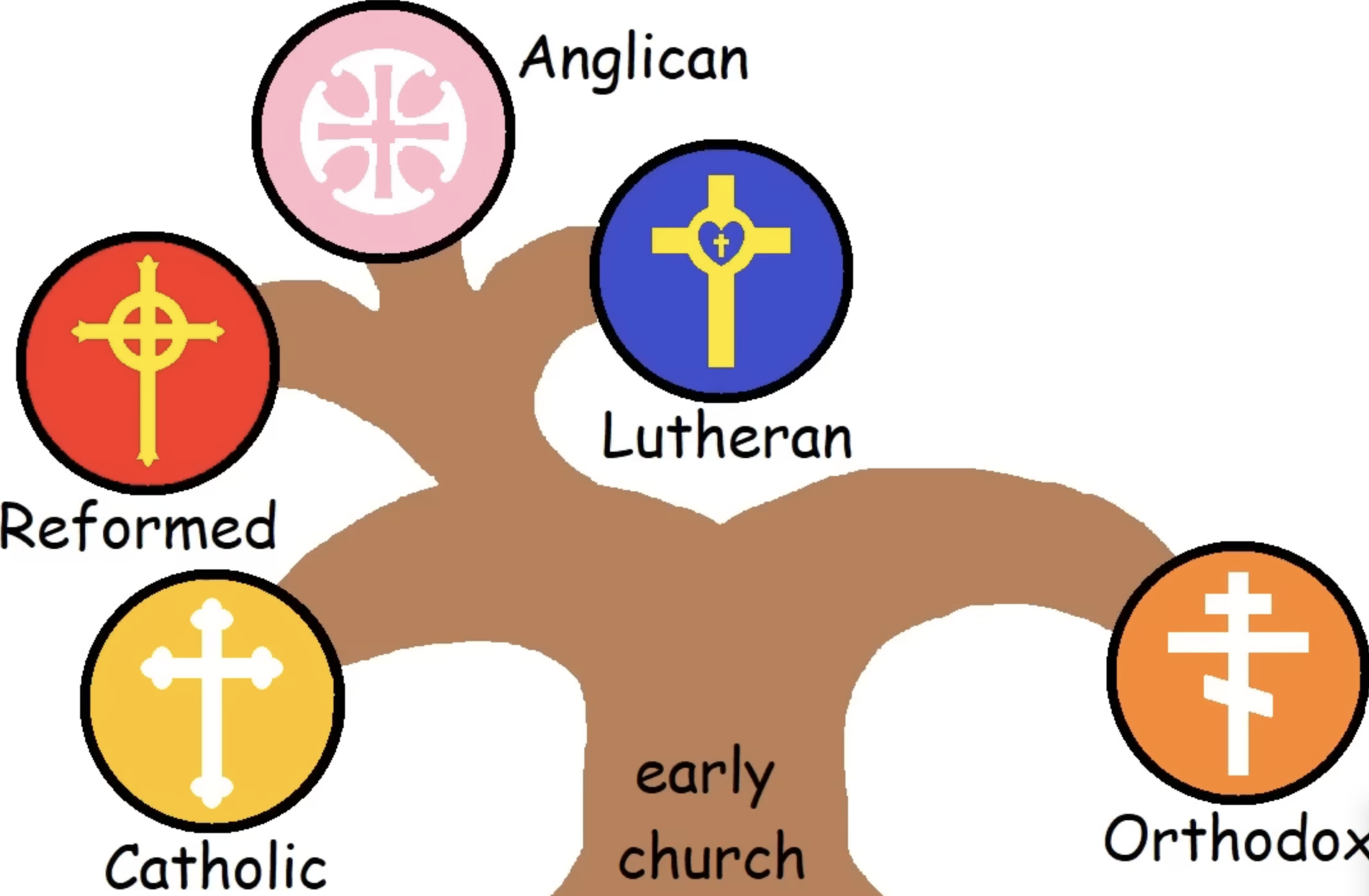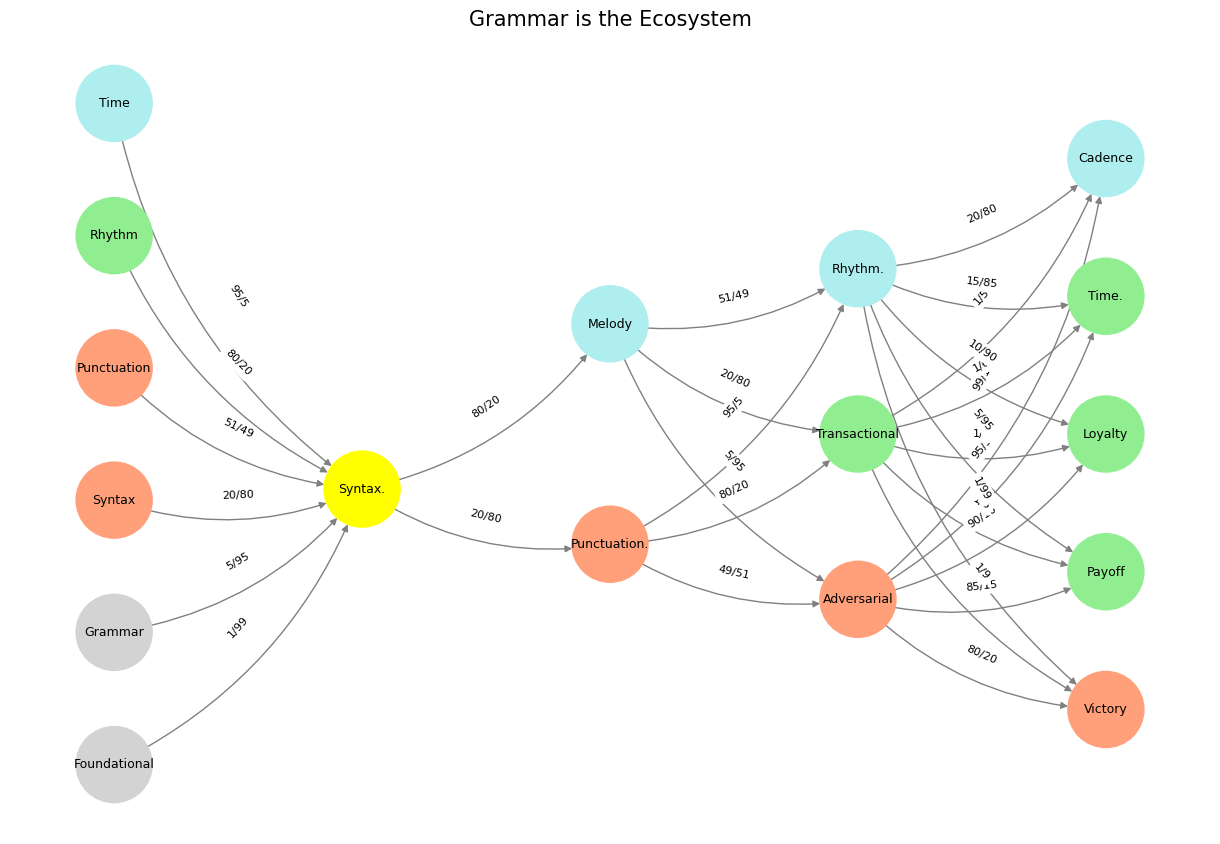Resilience 🗡️❤️💰#
Grammar is the Ecosystem
Grammar is not a rigid set of rules governing language but an ecosystem, a dynamic interplay of elements that shape meaning, structure, and expression. Within this system, phonetics, syntax, melody, rhythm, and cadence coexist, each contributing to the organic evolution of language. Syntax, often mistaken as grammar itself, is merely the skeletal framework—necessary but insufficient on its own. Grammar encompasses not just the arrangement of words but the very essence of communication, weaving together layers of sound, time, and intention to form an intricate, living structure.

Fig. 8 Influencer (Witness) vs. Indicator (Trial). These reflects sentiments in 2 Chronicles 17:9-12: For the eyes of the Lord run to and fro throughout the whole earth, to show Himself strong (Nowamaani) on behalf of them whose heart is perfect toward Him. This parallels Shakespeare’s image of the poet’s eye “in a fine frenzy rolling,” scanning from heaven to earth and back. Ukubona beyond the mundane (network layers 3-5), upstream to first prinicples of the ecosystem (layer 1). This is the duty of intelligence and what our App and its variants in and beyond clinical medicine aims for – to elevate perception, agency, and games for all. To leave a shrinking marketplace for the serpent in Eden, for snakeoil salesmen, for fraudstars. To shrink the number of the gullible.#
In this ecosystem, phonetics serves as the raw material, the elemental vibrations from which language emerges. Without phonetics, there is no speech, only silence. Yet phonetics alone cannot sustain meaning—it requires syntax to arrange sounds into coherence. Syntax, however, operates in a realm beyond mere organization. It is both the blueprint and the neural wiring of language, dictating how words interact and what roles they assume in relation to one another. But even here, the function of syntax is not absolute; it must yield to the gravitational pull of melody and rhythm, which introduce nuance, emphasis, and emotional depth. These elements, often neglected in formal grammatical study, dictate the fluidity of speech, the natural pauses, and the cadences that make language more than just a vehicle for information.
Rhythm, in particular, is the silent orchestrator of language. It determines the pacing of thought, the urgency of dialogue, and the tension within discourse. Whether in poetry, music, or spontaneous speech, rhythm imposes an order that is not strictly syntactical but deeply grammatical. It is the heartbeat of language, pulsating beneath the surface, reinforcing patterns of expectation and deviation. The adversarial and transactional dimensions of rhythm emerge in negotiation—whether between speakers in conversation or between phrases within a sentence. A misplaced pause can shift meaning, just as a syncopated beat can redefine a musical phrase.
Cadence, the final movement of this grammatical symphony, resolves tension. It is not just the ending of a sentence but the fulfillment of its grammatical arc. Cadence signals closure, victory, or sometimes, intentional ambiguity. It holds the key to tone, distinguishing between a declarative statement, a rhetorical question, and an ironic jab. Without cadence, language would be structurally sound yet emotionally hollow, devoid of the inflections that render meaning personal and persuasive. Time, interwoven with cadence, exerts its influence on all layers of grammar. It is present in verb tense, in the evolution of linguistic structures, and in the ephemeral nature of spoken dialogue.
The neural network of language, much like the human brain, encodes these elements in varying weights. Some connections are weak, mere traces of possible meanings, while others dominate, reinforcing dominant grammatical pathways. Syntax may seem fundamental, but it is not the final authority. As rhythm and melody pull the structure into new configurations, grammar adapts, stretching toward evolution rather than rigidity. This is why grammar cannot be reduced to syntax alone—syntax is the machinery, but grammar is the ecosystem, alive with the forces of time, tension, and transformation.
Show code cell source
import numpy as np
import matplotlib.pyplot as plt
import networkx as nx
# Define the neural network layers
def define_layers():
return {
'Suis': ['Foundational', 'Grammar', 'Syntax', 'Punctuation', "Rhythm", 'Time'], # Static
'Voir': ['Syntax.'],
'Choisis': ['Punctuation.', 'Melody'],
'Deviens': ['Adversarial', 'Transactional', 'Rhythm.'],
"M'èléve": ['Victory', 'Payoff', 'Loyalty', 'Time.', 'Cadence']
}
# Assign colors to nodes
def assign_colors():
color_map = {
'yellow': ['Syntax.'],
'paleturquoise': ['Time', 'Melody', 'Rhythm.', 'Cadence'],
'lightgreen': ["Rhythm", 'Transactional', 'Payoff', 'Time.', 'Loyalty'],
'lightsalmon': ['Syntax', 'Punctuation', 'Punctuation.', 'Adversarial', 'Victory'],
}
return {node: color for color, nodes in color_map.items() for node in nodes}
# Define edge weights (hardcoded for editing)
def define_edges():
return {
('Foundational', 'Syntax.'): '1/99',
('Grammar', 'Syntax.'): '5/95',
('Syntax', 'Syntax.'): '20/80',
('Punctuation', 'Syntax.'): '51/49',
("Rhythm", 'Syntax.'): '80/20',
('Time', 'Syntax.'): '95/5',
('Syntax.', 'Punctuation.'): '20/80',
('Syntax.', 'Melody'): '80/20',
('Punctuation.', 'Adversarial'): '49/51',
('Punctuation.', 'Transactional'): '80/20',
('Punctuation.', 'Rhythm.'): '95/5',
('Melody', 'Adversarial'): '5/95',
('Melody', 'Transactional'): '20/80',
('Melody', 'Rhythm.'): '51/49',
('Adversarial', 'Victory'): '80/20',
('Adversarial', 'Payoff'): '85/15',
('Adversarial', 'Loyalty'): '90/10',
('Adversarial', 'Time.'): '95/5',
('Adversarial', 'Cadence'): '99/1',
('Transactional', 'Victory'): '1/9',
('Transactional', 'Payoff'): '1/8',
('Transactional', 'Loyalty'): '1/7',
('Transactional', 'Time.'): '1/6',
('Transactional', 'Cadence'): '1/5',
('Rhythm.', 'Victory'): '1/99',
('Rhythm.', 'Payoff'): '5/95',
('Rhythm.', 'Loyalty'): '10/90',
('Rhythm.', 'Time.'): '15/85',
('Rhythm.', 'Cadence'): '20/80'
}
# Calculate positions for nodes
def calculate_positions(layer, x_offset):
y_positions = np.linspace(-len(layer) / 2, len(layer) / 2, len(layer))
return [(x_offset, y) for y in y_positions]
# Create and visualize the neural network graph
def visualize_nn():
layers = define_layers()
colors = assign_colors()
edges = define_edges()
G = nx.DiGraph()
pos = {}
node_colors = []
# Add nodes and assign positions
for i, (layer_name, nodes) in enumerate(layers.items()):
positions = calculate_positions(nodes, x_offset=i * 2)
for node, position in zip(nodes, positions):
G.add_node(node, layer=layer_name)
pos[node] = position
node_colors.append(colors.get(node, 'lightgray'))
# Add edges with weights
for (source, target), weight in edges.items():
if source in G.nodes and target in G.nodes:
G.add_edge(source, target, weight=weight)
# Draw the graph
plt.figure(figsize=(12, 8))
edges_labels = {(u, v): d["weight"] for u, v, d in G.edges(data=True)}
nx.draw(
G, pos, with_labels=True, node_color=node_colors, edge_color='gray',
node_size=3000, font_size=9, connectionstyle="arc3,rad=0.2"
)
nx.draw_networkx_edge_labels(G, pos, edge_labels=edges_labels, font_size=8)
plt.title("Grammar is the Ecosystem", fontsize=15)
plt.show()
# Run the visualization
visualize_nn()


Fig. 9 Resources, Needs, Costs, Means, Ends. This is an updated version of the script with annotations tying the neural network layers, colors, and nodes to specific moments in Vita è Bella, enhancing the connection to the film’s narrative and themes:#

